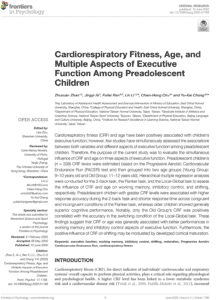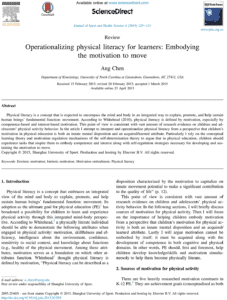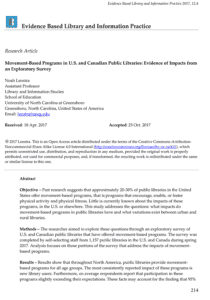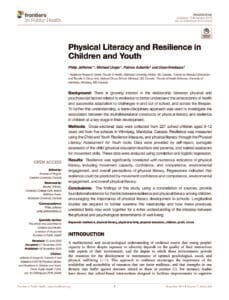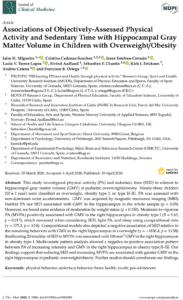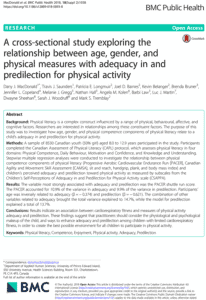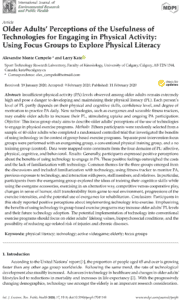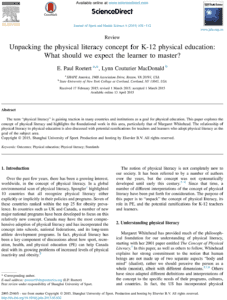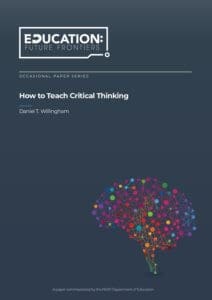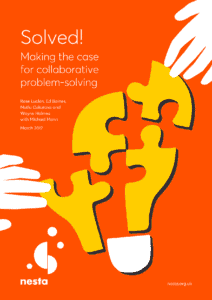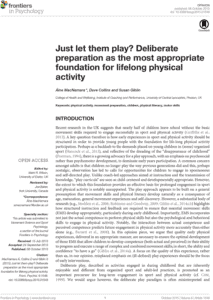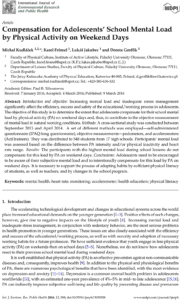-
Cardiorespiratory Fitness, Age, and Multiple Aspects of Executive Function Among Preadolescent Children
Abstract Cardiorespiratory fitness (CRF) and age have been positively associated with children’s executive function; however, few studies have simultaneously assessed the associations between both variables… -
Operationalizing physical literacy for learners: Embodying the motivation to move
Abstract Physical literacy is a concept that is expected to encompass the mind and body in an integrated way to explain, promote, and help sustain… -
Movement-Based Programs in U.S. and Canadian Public Libraries: Evidence of Impacts from an Exploratory Survey
Abstract Objective Past research suggests that approximately 20-30% of public libraries in the United States offer movement-based programs, that is programs that encourage, enable, or… -
Resilience and Physical Literacy in Children and Youth
Background There is growing interest in the relationship between physical and psychosocial factors related to resilience to better understand the antecedents of health and successful… -
Associations of Objectively-Assessed Physical Activity and Sedentary Time with Hippocampal Gray Matter Volume in Children with Overweight/Obesity
Abstract This study investigated physical activity (PA) and sedentary time (SED) in relation to hippocampal gray matter volume (GMV) in pediatric overweight/obesity. Ninety-three children (10… -
A cross-sectional study exploring the relationship between age, gender, and physical measures with adequacy in and predilection for physical activity
Background Physical literacy is a complex construct influenced by a range of physical, behavioural, affective, and cognitive factors. Researchers are interested in relationships among these… -
Older Adults Perceptions of the Usefulness of Technologies for Engaging in Physical Activity: Using Focus Groups to Explore Physical Literacy
Abstract Insufficient physical activity (PA) levels observed among older adults remain extremely high and pose a danger to developing and maintaining their physical literacy (PL).… -
Unpacking the physical literacy concept for K-12 physical education: What should we expect the learner to master?
Abstract The term “physical literacy” is gaining traction in many countries and institutions as a goal for physical education. This paper explores the concept of… -
How to Teach Critical Thinking
The Australian Curriculum acknowledges that developing thinking skills is a primary purpose of education, and identifies critical thinking as an important capability for the 21st… -
Solved! Making the case for collaborative problem-solving
This report, compiled by a team from Nesta, argues that the ability to solve problems with others is a crucial skill for our young people… -
Just let them play? Deliberate preparation as the most appropriate foundation for lifelong physical activity
Just let them play? Deliberate preparation as the most appropriate foundation for lifelong physical activity Recent research in the UK suggests that nearly half of… -
Compensation for Adolescents’ School Mental Load by Physical Activity on Weekend Days
Abstract Introduction and objective: Increasing mental load and inadequate stress management significantly affect the efficiency, success and safety of the educational/working process in adolescents. The…


